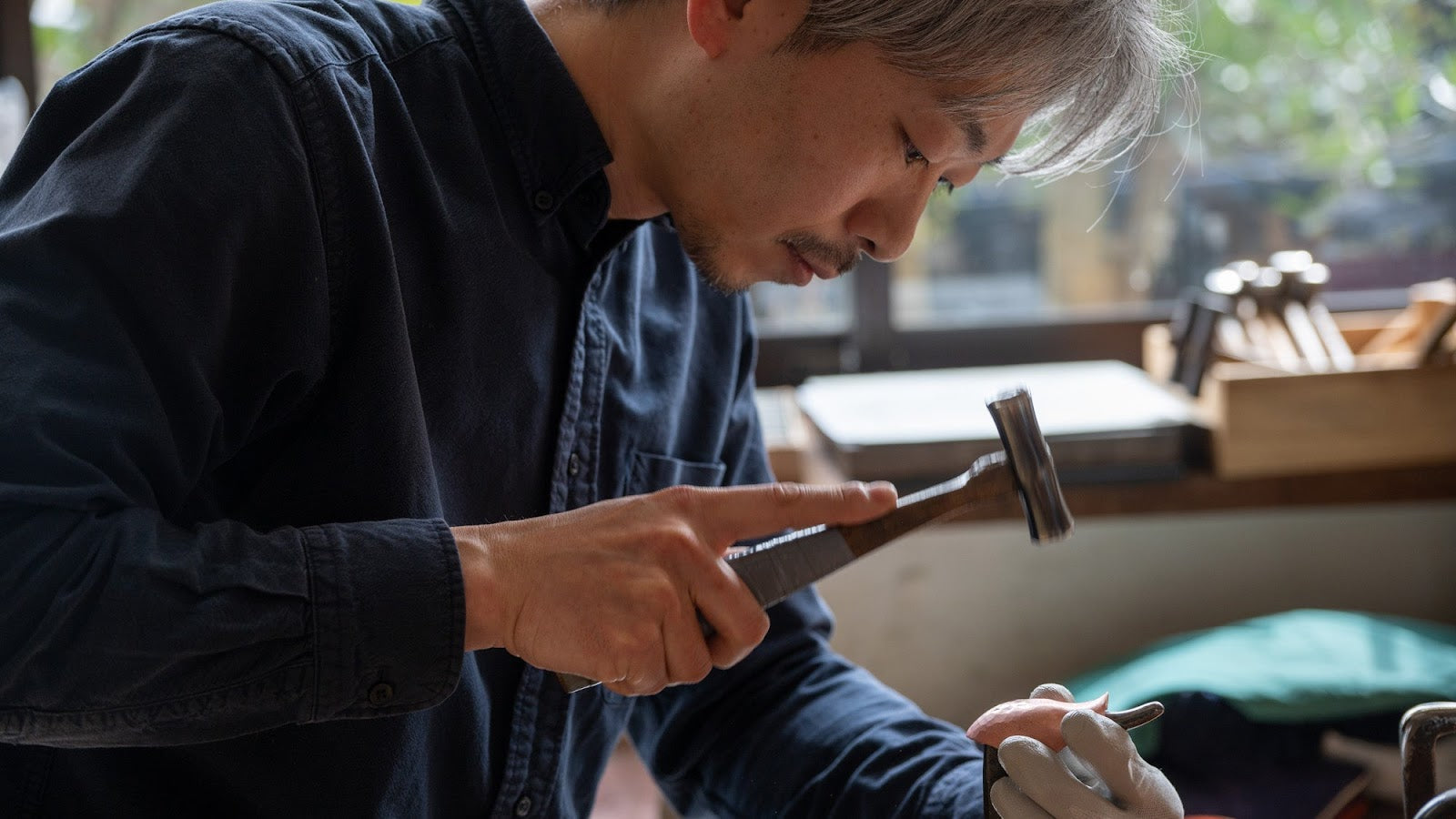
Nishikata Hiroshi: Bringing Jewelry Industry Expertise to Tsuiki Innovation
Written by Team MUSUBI
We interviewed the Nishikata brothers, craftsmen at the Seigado workshop. Following our interview with older brother, Nishikata Ryota, this time we delve into the creation of tsuiki items with younger brother, Nishikata Hiroshi, who has experience in the jewelry industry.
Tsuiki is a type of metal crafting technique that involves hammering and embossing copperware products. This complex method entails numerous stages and intricate manual labor, demanding considerable expertise. Situated at the base of Mt. Yahiko in Niigata Prefecture, Seigado's workshop is located in a region where high-quality copper was found around 300 years ago, and where the art of tsuiki has been cultivated since.
Listening to him, it seems that he also has an objective understanding of the current challenges facing the tsuiki industry.
Table of contents
The Turning Point: From the Jewelry Industry to the World of Craftsman
Nishikata Hiroshi's father is a craftsman specializing in the traditional craft of tsuiki. His older brother became a craftsman immediately after graduating from graduate school. As Hiroshi was the second son, he initially did not consider taking over the family business.

Interested in art and metal crafts, Hiroshi went to a university specializing in the arts and entered the jewelry industry, working with metals. After about ten years in this field, his brother suggested, "How about the two of us start working together at Seigado?" Subsequently, Hiroshi began working in the family business of tsuiki.

The Depths of Craftsmanship
Hiroshi became a craftsman at the age of 34, but found the reality different from what he had expected. Particularly in the first one to two years, he struggled greatly both in terms of knowledge and physical strength. Even now, he still feels that there are areas in which his skills are lacking.

The process of hammering has not changed for about 300 years. Through his work, he feels the profound significance of this continuing history and tradition. Even though he makes the same products, each time he encounters new discoveries and difficulties, and never fully gets accustomed to the process.

For Hiroshi, his brother, Ryota, is the standard at Seigado. He feels that he has to be able to make the same things that his brother makes, or he has to do it at the same speed as his brother. Both he and his brother are gaining experience and improving together. He said, "I don't think I will ever catch up to my brother, but I think I need to help my brother."
He sometimes makes mistakes, but occasionally these mistakes turn into attractive details. Over-melting or over-hammering can transform into a positive attribute. "The metals I work with have various fascinations, and there are discoveries that only I can make. It's interesting to share these with my brother as we work together."
Crafting Today: Current Trends and Challenges

Hiroshi has experience working in the jewelry industry, which allows him to observe the current state of traditional crafts from a different perspective. The jewelry industry is heavily influenced by fashion, trends, and the conditions of retail stores, and relies on various distribution channels. Analyzing customer trends and preferences was part of his job.
While working in jewelry, he observed the work of his father and brother, realizing that to survive in modern times, one cannot just keep making traditional items without adaptation. This realization led him to decide to start his career. Now, he works daily thinking about how to create products suited to contemporary lifestyles. In doing so, he values having perspectives from various fields such as jewelry, everyday items, fashion, and architecture.

Additionally, his activities have expanded both domestically and internationally. He has previously exhibited his work in studios and galleries throughout Japan, and has organized art fairs such as "Contemporary Japanese Metal Work" in Melbourne, Australia, and "A Tradition of Excellence—Japanese Techniques in Contemporary Metal Arts" in Chicago, USA.
The products made at the Seigado workshop are changing. For instance, while items related to tea such as tea caddies and coasters were common in the past, recently there has been an increase in the production of sake vessels, which are considered high-end products. He feels that tsuiki items are suitable for those who seek to find and enhance the value in their time enjoying sake.
Driven by a desire to revitalize tsuiki, Hiroshi is constantly seeking new ways to express his creativity. His background in the jewelry industry has equipped him with the skills and vision to elevate tsuiki beyond its traditional applications.
Driven by a desire to revitalize tsuiki, Hiroshi is constantly seeking new ways to express his creativity. His background in the jewelry industry has equipped him with the skills and vision to elevate tsuiki beyond its traditional applications.







Leave a comment
This site is protected by hCaptcha and the hCaptcha Privacy Policy and Terms of Service apply.